By Kirstin Jackson

I might be what some call an “expert cheese eater and wine drinker.” While nothing so official is yet printed on my business card, if it were, I would consider broadening this title to include “experienced cheese pair-er.” I wouldn’t want to overlook future branding opportunities to market my well-rounded fondness for pairing drinks (like mescal, whiskey, beer, sake), or foods (that are pickled, meaty, nutty, sweet, salty) with cheese.
Working as a wine bar manager, cheese educator, and writer means that I sample vast amounts of cheese, dairy-friendly accoutrements, and alcohol so I can give the accurate pairing advice expected of one in my delicious profession. Then there’s also my recently published book, It’s Not You, It’s Brie: Unwrapping America’s Unique Culture of Cheese, that explores the history and culture behind domestic dairy. Nearly every one of its 48 different cheese profiles includes thoroughly and happily-tested pairing suggestions. So all this is to say that for the past five or so years I’ve been doing a lot of research. Knowing of my devotion, and that I have a tendency to get hungry and thirsty quite often, it’s probably not surprising to learn that I have a few favorite places to “professionally better myself” — that is, feed said obsession locally.
The following are seven spots where I head when I want a little something extra with my fermented milk. This list won’t tell you where to procure quince paste and Manchego. As special and harmonious of pairings as Elvis and Graceland, or Rachel Maddow and blazers, this is a list of where to find unusual and standout cheese pairings — those that make me thankful someone actually pays me to do what I do. And yes, most have alcohol involved, because that’s how I, and the cheese wheels, roll.
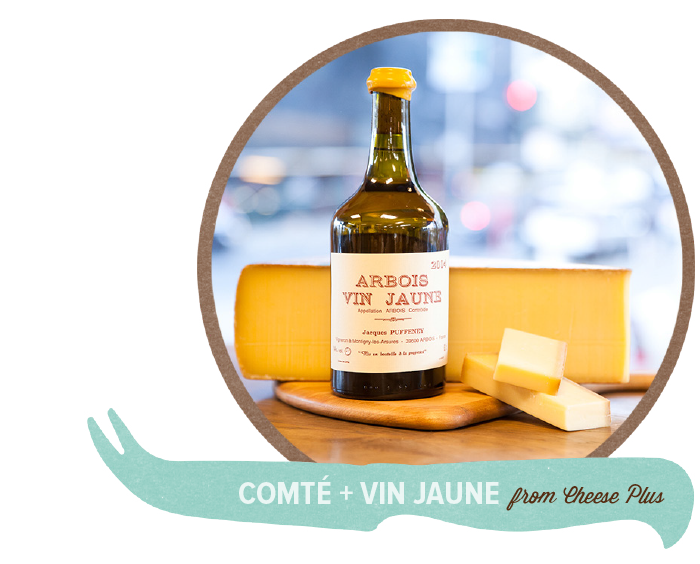
I’m not gonna say that Comté is the best semi-hard cheese from France (because I’m secretly afraid that doing so would keep the proud French government from extending an invitation for me to tour all their semi-hard cheesemaking regions, which, I’m sure, is coming any day now) but, it certainly is the best pairing with Vin Jaune.
Vin Jaune is an oxidized dry white wine made from the Savagnin grape in the Jura region of France. It tastes like toasted walnut skins, lemon zest, and sometimes even coffee. Truth be told, it is one of the weirdest wines around, and some of you won’t like it. When sipping it alone, that is. I’m certain, however, that you’ll like it with Comté, an Alpine-style cow’s milk cheese also made in the Jura region, enjoyed with Vin Jaune by the locals. Together, think walnuts, caramel, brown butter, cream, and lemon. Gorgeous. One of my favorite cheese and wine shops in San Francisco, Cheese Plus in Nob Hill, often carries them both.
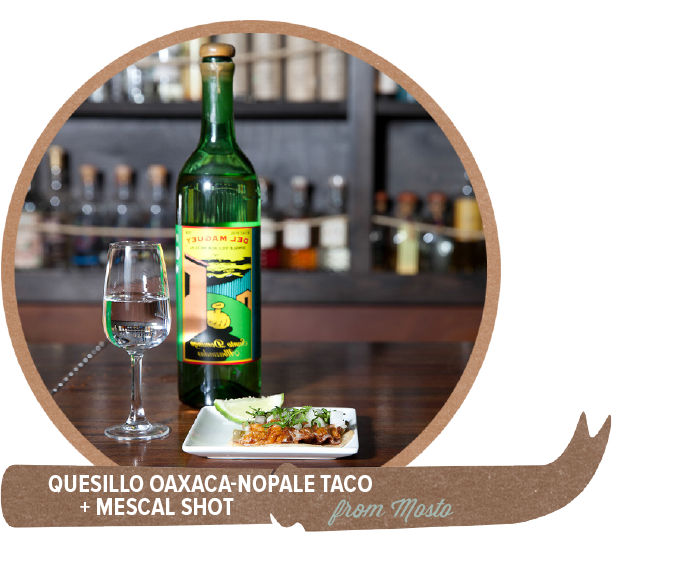
As a mescal lover, I swear allegiance to any drinking or eating establishment that serves more than eight options of this agave alcohol. When a restaurant also serves a cheese from the Oaxacan state of Mexico that’s especially close to my heart, it’s all over. I’m there. A lot.
Quesillo Oaxaca is an artisan cheese that is traditionally made in a process of hand pulling. Its curds are stretched 10 to 15 feet before being wrapped into a ball. It tastes like sweet fresh milk, pulls apart in strings, and threads miraculously when heated. Melted between corn tortillas and served with nopale — young prickly pair cactus paddles — it becomes a stretchy, savory snack that is very happy with a shot of the more subtle mescals out there (let your Mosto server guide you through their current options). Fair warning — you can snag this duo only on bar side of Mosto.
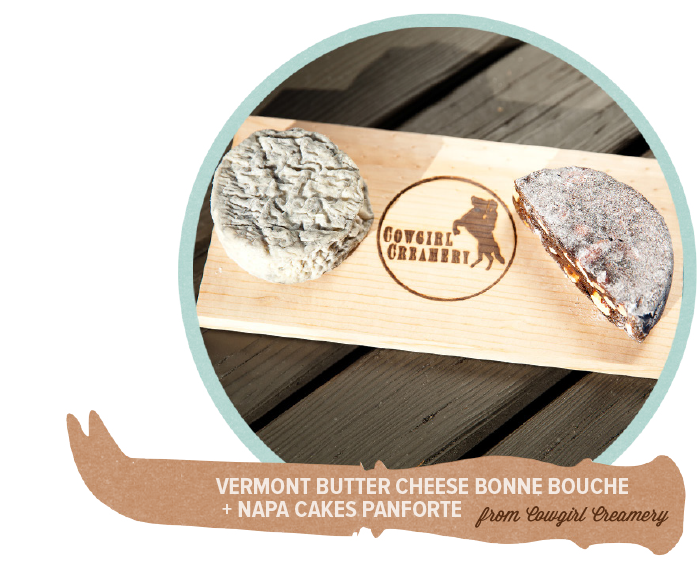
Lightly aged, surface-ripened goat cheeses with rippled rinds covering their soft insides have a rich creaminess that clings to the intense sweet-tart flavors of dried fruits like apricot. When a goat’s milk creation like one from Capriole, Vermont Butter & Cheese Creamery, or the harder-to-find Goat’s Leap, shows up at Cowgirl (ask the mongers what’s available, the offering changes weekly), take one home and slice it over one of the panfortes — a thick, sliceable, dried-fruit and spice cake — sold in the shop. The one made by Napa Cakes has dried apricots, raisins, nuts, cocoa, spices, and is lightly sweetened with honey. This pairing, a glass of wine, bread, and a salad make for a great light dinner.
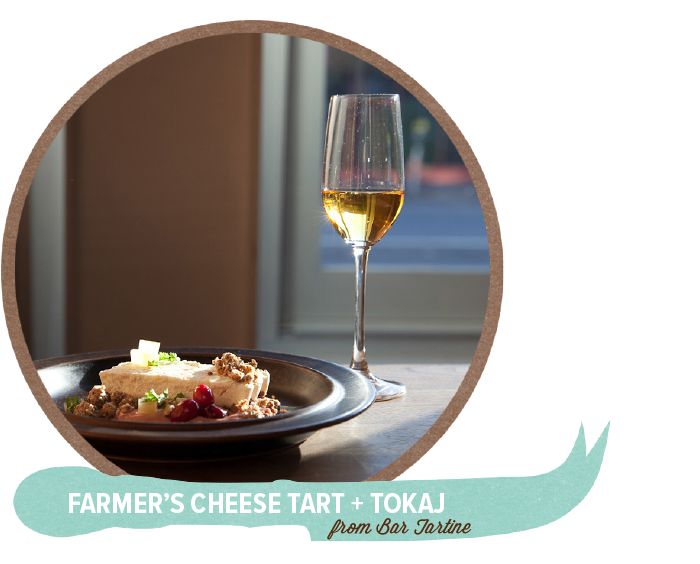
I can’t say enough good things about Bar Tartine’s dairy program. In fact, the chefs here are masters with fermentation in general, from sauerkraut and pickles to cheese. It’s enough to make a Scando-German girl swoon.
One mainstay on its ever-changing menu is the house-made farmer’s cheese tart with a crumbly, nutty, crunchy crust. Inspired by similar desserts made all over Eastern Europe, Bar Tartine’s tart is made with fresh, lightly-acidified farmer’s cheese (kind of like cream cheese, kind of like ricotta) and its fresh, sweet, rich, and fluffy flavors and texture would make a Cheesecake Factory cook hang their head in shame. Until they tasted it with the restaurant’s Tokaj — a sweet Hungarian dessert wine that tastes like honey, spice, and orange zest — then they’d perk up a little.
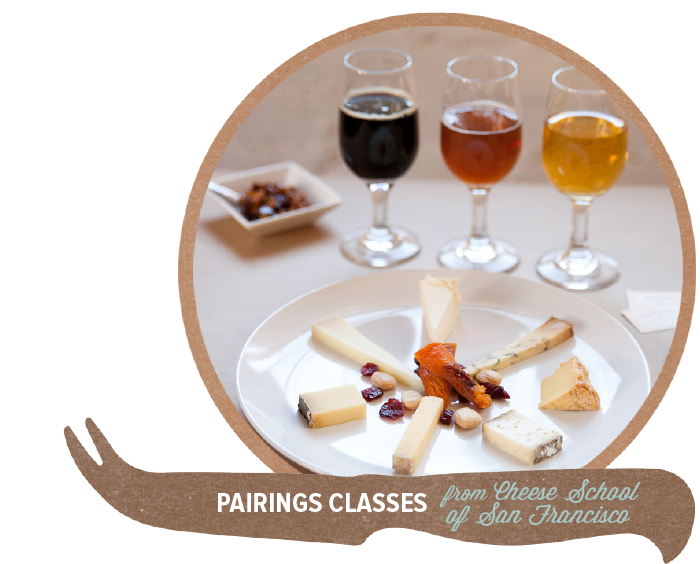
First disclosure: I teach at the Cheese School of San Francisco. Second disclosure: I still want to take classes here. The only independent cheese school in the nation, this institute’s curriculum focuses entirely on dairy. Really. You’ll learn to taste cheese, and become knowledgeable on its history and complexities.
Pairing classes I teach tend to focus on wine (though I’ve slipped in a spirits and beer pairing class from time to time), but the education doesn’t stop at the classic. A few that look awfully cool and deliciously geeky: “Holy Cow! Monastic Cheeses and Their Origins,” “The Art of Tasting & Pairing Chocolate,” and “British Cheese and the Wines That Love Them.”

Burrata is soft, fresh sweet mozzarella stuffed with mozzarella curds mixed with cream. When you cut into it, its creamy insides spill out and it will make you as happy as eating a bowl of ice cream.
If you haven’t tried this pasta-filata (stretched curd-style cheese) yet, you should. Tonight. It’s always on the menu at A16, and served drizzled with olive oil, sea salt, and toasted bread. Because A16’s dish is a simple presentation that highlights burrata’s subtle, plush milkiness, I like to keep this pairing simple. Go with a dry Prosecco or un-oaked Italian white from the restaurant’s bar. Ask for advice if you’re not familiar with A16’s wine list (60 percent is Italian). The servers know their stuff.
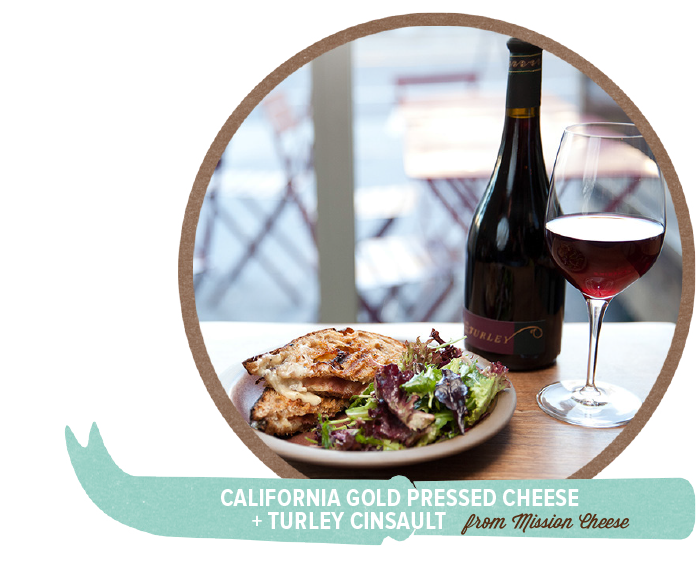
Mission Cheese has a wide enough assortment of cheese plates and fixings that any cheese geek would be happy just ordering from its flight options. While I would highly recommend exploring the artisan cheeses solo, it still feels necessary to point out that the people who work here are also masters of warming gooey cheese between slices of buttery bread.
My top pressed-sandwich choice is the California Gold sandwich, made with San Joaquin Gold cheese, chèvre, prosciutto, and fig preserves. It’s got the whole melted cheese comfort thing going on, but the tanginess from chèvre and the sweetness from the fig preserves add a little nuance. This and a glass of the Turley Cinsault are perfect on a wintry day.







